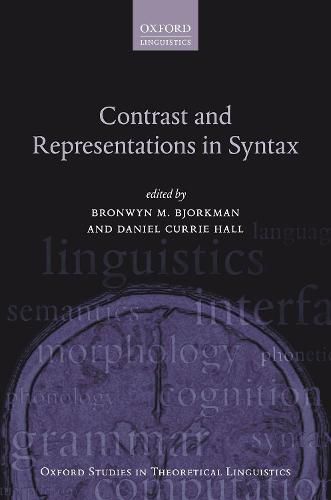Readings Newsletter
Become a Readings Member to make your shopping experience even easier.
Sign in or sign up for free!
You’re not far away from qualifying for FREE standard shipping within Australia
You’ve qualified for FREE standard shipping within Australia
The cart is loading…






This book explores how grammatical oppositions - for instance, the contrast between present and past tense - are represented in the syntax of natural languages. The nature of syntactic contrast is tied to a fundamental question in generative syntactic theory: what is universal in syntax, and what is variable? The chapters in this volume examine the dual role of features, which both define a set of paradigmatic contrasts and act as the building blocks of syntactic structures and the drivers of syntactic operations. In both of these roles, features are increasingly considered the locus of parametric variation. This identification of parameters with features has opened up new possibilities for investigating connections between the morphological system of a language and its syntax, and suggests a new role for featural contrast in syntactic theory. The contributors to this volume address these two major questions from a range of perspectives, drawing on data from a variety of typologically diverse languages, including Blackfoot, Greek, Onondaga, and Scottish Gaelic.
$9.00 standard shipping within Australia
FREE standard shipping within Australia for orders over $100.00
Express & International shipping calculated at checkout
This book explores how grammatical oppositions - for instance, the contrast between present and past tense - are represented in the syntax of natural languages. The nature of syntactic contrast is tied to a fundamental question in generative syntactic theory: what is universal in syntax, and what is variable? The chapters in this volume examine the dual role of features, which both define a set of paradigmatic contrasts and act as the building blocks of syntactic structures and the drivers of syntactic operations. In both of these roles, features are increasingly considered the locus of parametric variation. This identification of parameters with features has opened up new possibilities for investigating connections between the morphological system of a language and its syntax, and suggests a new role for featural contrast in syntactic theory. The contributors to this volume address these two major questions from a range of perspectives, drawing on data from a variety of typologically diverse languages, including Blackfoot, Greek, Onondaga, and Scottish Gaelic.